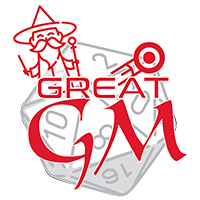Life on the Hebrides
The Out Isles of the Kingdom of Man and the Isles in 1220 consist of the Sudrey island groups of Lewis and Skye, which jointly provide 8 hersar forthe Tynwald (5 from Lewis and 3 from Skye).
Historically, the Island groups of Islay and Mull, and the Kintyre peninsula, also belonged to this group, but since the time of Somerled, those lands have become the property of Scotland (at least theoretically), and are ruled by Somerled’s sons and grandsons.
Historically, the Hebrides were first settled by the Fomhori and the Tuatha de Danaan, much as Ireland was. The first humans here were the enigmatic BrochBuilders, and they held out against the Picts here longer than on the mainland, but they still vanished long ago — leaving only their mysterious Broch-towers as evidence of their existence.
These towers of unknown function are dry-stone constructions, often rather large, with double walls, galleries, and large central chambers, though the ceilings in the galleries tend to be very low (5 ft or less). Subsequently, the Cruithni and Irish Celts inhabited the islands, though the centuries of invasion by the Vikings have produced a strongly mixed population.
The population of the isles subsists mostly by sea fishing — along with harvesting kelp and seagull eggs, supplemented by some sheep and cattle farming. Hebridean sheep are similar in appearance to Manx Loaghtan sheep, with dark wool and four horns, but they are smaller, and never possess six horns, as the Loaghtan sometimes do. Almost everyone on the isles also grows kale, turnips, and corcadubh and eòrna (black oats and barley, for baking bannocks and oat-cakes), and salmon are caught in the rivers by rods and fish-traps. There is also a diminutive breed of pony kept on the isles, and found nowhere else.
Wood is very scarce on the isles — indeed, all driftwood is legally the property of the hersir of the parish, and fines are levied for any who keep it forthemselves. Though the hersir will sell this wood to the peasants for use in house and shipbuilding, it is too expensive to burn, and peat is therefore the fuel used in hearths. Sods of peat are cut (a dirty and back-breaking labor) and left to dry in the sun over summer, and stockpiles kept for winter.
Popular sporting pastimes include inter-village games of quoits and shinty (a hockey-like game, known locally as camanachd, after the caman shintysticks), which are played by men, or children of both sexes (rules for playing shinty are provided in Lion ofthe North, page 85). Over winter, it is common to have a céilidh (loosely “party”) in a different house of the community every night — where the locals gather to socialize and swap stories.
Clothing is made from flax, or from home-spun wool from the hardy Hebridean sheep; wealthier
families might own some clothing of linen, or even of silk. Men wear shirts and trews, with over-kilts worn in cold weather, while the women wear longsleeved blouses and long skirts. For women, a snood (head-band) is the symbol of maidenhood, and a woman will change her headgear to a mutch (a kind of plain bonnet) the day after marriage.
Navigating the Irish Sea and the Hebrides
The Irish Sea is the body of water separating Ireland from mainland Britain; it extends from the Straits of Moyle at the north (between Scotland and Ireland) to St. George’s Channel at the south (between Wales and Ireland). The Irish Sea is commanded by the Isle of Man, found in the middle of that body of water. The isles of the Hebrides are all north of the Straits of Moyle, exposed to the harsher weather of the Atlantic Ocean. Though not as treacherous and unpredictable as wide-ocean waters like the Atlantic, nor as freezing as the North Sea, the Irish Sea was far from hospitable, having numerous navigation hazards to be avoided while sailing across it. In summer, sailing conditions would usually be quite favorable — the sheltered condition of the Irish Sea making conditions comparable to the Mediterranean (“Easy” to “Medium”conditions; see “Travel Times” on page 43 of Mythic Seas). In spring and autumn, the weather would usually turn blustery and windy, and these seasonal gales made sailing unpleasant and dangerous (usually“Medium” to “Very Hard” sailing conditions).Often, when it is not windy, it will be foggy, making navigation all but impossible. In winter, while the gales will have died down, the weather will generally be inclement, (“Light” to “Very Hard” conditions). Further north, in the Hebrides, the conditions are somewhat worse all year round (use the standard sailing conditions from Mythic Seas). Additionally, at all times of year, the channels between the numerous small islands of the Hebrides funnel tidal flows and produce dangerous riptides (or sruth) — for example, the Corryvrecken whirlpool off Jura, the roar of which can be heard over 10 miles away! The sea-lifeof the seas around the Hebrides can also be hazardous — including whales, sharks and killer whales (as well as the more peaceful dolphin). The Irish Sea is quite a busy sea-channel, with many ships sailing to and from Belfast, Dublin, the Clyde, the Mersey, Anglesey, Man, Bristol, and other ports up and down the coasts. Independent piracy is rare, as the risks of getting caught generally outweigh the benefits; however, sponsored privateerism is relatively common, as ships of one lord plunder the ships of rival lords.Traditional Hebridean Sailors Prayer “You who dwell in the heights above, Help us in the depths below; Give us a day breeze as you wish And a night breeze as we would choose. May the clouds hide us, the moon shine on the foe; Be we to windward, and becalmed be they. Keep firmly tethered all sudden uproar, And leave the rest to me.”Hebridean Ships Most of the ships plying the Hebrides and the Irish Sea are built in the mold of the Viking longships. However, Curragh-like ships made of hide stretched over a willow frame are still in use for short journeys (for example, to ferry Scottish gallogladh mercenaries across to Ireland). Based on an ancient Celtic design (such as that used in St. Brendan’s famous voyage) their advantage is that great fleets of them can be constructed quickly and cheaply, and then collapsed at the other side until needed again.
Type
Archipelago
Included Locations
Remove these ads. Join the Worldbuilders Guild









Comments